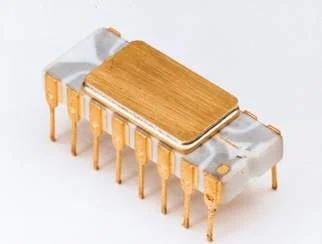40 years have passed since Intel introduced the 4004, the world’s first commercially available microprocessor.
Today, microprocessors power a wide range of everyday devices, including computers, servers, phones, cars, cameras, refrigerators, radios and TVs.

According to Intel CTO Justin Rattner, the proliferation of microprocessors can be attributed – in part – to Santa Clara’s relentless pursuit of Moore’s Law.
Moore’s Law is essentially a forecast for the pace of silicon tech that sees the transistor density of semiconductors doubling roughly every two years, while increasing performance and decreasing costs.
Indeed, compared to the Intel 4004, today’s second-gen Core processors boast more than 350,000 times the performance and each transistor uses about 5,000 times less energy.
During this same time period, the price of a transistor has dropped by a factor of about 50,000, making electronic devices affordable for the masses.
Future microprocessors developed on Intel’s next-generation 22nm manufacturing process will hit PC systems in 2012, and are expected to deliver even more energy-efficient performance as a result of 3D Tri-Gate transistors.






